At TrueNicks we are continually trying to improve the data in our reports in order to help you make a more informed and intelligent decision in your breeding and selection efforts. In that regard, in response to feedback we received from our customers, earlier this year we launched the TrueNicks Key Ancestors Report, a report that considers the entire pedigree of a mare and the stallions that she could potentially be bred to.
Today, as part of that ongoing effort of improvement and after listening to feedback from TrueNicks users, we've added four new statistics to the TrueNicks Enhanced Report. These reports can be run on any horse or hypothetical mating and are also included for each hypothetical mating in a Key Ancestors Report with Analysis or Broodmare Analysis Plus. The new statistics are:
- Inbreeding Coefficient (% to eight generations)
- Coefficient of Relatedness (% to six generations)
- Pedigree Completeness (to eight generations)
- Unique Ancestors (to eight generations)

|
The two coefficients answer distinct, important questions for Thoroughbred breeders:
- What is the degree of inbreeding in this mating?
- How closely related are the sire and dam of this mating?
The first question can be answered by looking at the Inbreeding Coefficient. The degree of inbreeding is commonly expressed using a formula first derived by the famous American geneticist Sewall Wright early in the 20th century, and for this reason it is often referred to as Wright's Coefficient of Inbreeding.
Breeding racehorses is a non-random, assortative mating process, and inbreeding is used by breeders to fix desirable genetic traits or to attempt to remove deleterious traits by allowing them to manifest phenotypically. The coefficient introduced by Wright expresses the expected percentage of homozygosity (closeness to being identical) arising in a given mating. It can also be viewed as the average chance that any one gene pair is homozygous due to inheritance from a common ancestor.
A low inbreeding coefficient means a low level of inbreeding, at least in paper terms. The vast majority of racehorses have an inbreeding coefficient of less than 5%. Inbreeding coefficients over 5% are unusual, and over 10% are very rare. At this point, it is not known if there is a desirable or optimal level of inbreeding. The great Spectacular Bid has an inbreeding coefficient of 4.40% while the similarly-gifted Forego is 1.03%. Invariably with horses having an inbreeding coefficient approaching 5% or above, they are closely inbred to an ancestor that itself is inbred. Take a look at the pedigree of In Reality (4.91%, view pedigree) and the horse who he is inbred to in War Relic (8.61%, view pedigree) as an example. The inbreeding coefficient is calculated to eight generations; the reason eight generations was used was twofold. Firstly, computationally it was relatively easy to perform without compromising the accuracy of the figure. Secondly, in most modern pedigrees the ancestors were complete to eight generations, giving us an accurate figure to work with. It is for the latter reason that we include the Pedigree Completeness figure.
|
|
|
| Relationship | Inbreeding Coefficient* |
| Racehorse mated to its own parent (e.g. sire/daughter) | 25% |
| Half sibling matings (parents have a common sire or dam) | 12.5% |
| Full sibling matings (parents have a common sire and dam) | 25% |
| Parents have a single common great-grandparent | 3.1% |
As a side note, there is no evidence at this point in time to suggest that an increase in the level of inbreeding is associated with soundness in the Thoroughbred. It is a popular belief, but not one that has been proven. It is more likely that if the Thoroughbred as a population did reach a point where an inbreeding depression was occurring, it would be fertility—not soundness—that would first be affected.
The Coefficient of Relatedness answers a slightly different question. The coefficient of relatedness provides a way of objectively assessing the similarity of two pedigrees by giving a number that is a direct measure of shared ancestry. In racehorses, each horse receives half of its genes from its dam and half from its sire. Thus, each parent shares, on average, half of its alleles with a foal, and we say that a parent its offspring are related by 50%. Any two full siblings are also related by 50% to each other. Each sibling receives half of its genes from each parent; as a result, siblings could share no alleles (in the unlikely case that each sibling got the half of the genes from each parent that the other didn't), all alleles (in the unlikely case that both siblings got the same set of genes from each parent), or anywhere in between, but the average is 50%. (Read more at cornell.edu)
In terms of what the statistic means in a hypothetical mating, it assesses how closely related the sire and dam are in the mating at hand. This number can vary considerably from the inbreeding coefficient as a sire and dam can be inbred to different ancestors, and thus have a low coefficient of relatedness but, because they are each inbred, the resultant foal will have a high coefficient of inbreeding. The coefficient of relatedness is how we gather "like-bred" mares in the Key Ancestors Report.
The number of Unique Ancestors is, as the name suggests, a count of the number of unique names to eight generations in the pedigree at hand. Again, this number will vary depending on the coefficient of inbreeding, and at this point there is not an optimal or desirable number. Finally, the Pedigree Completeness is a required statistic in order to display the inbreeding coefficient and coefficient of relatedness. If you have an incomplete pedigree, these coefficients will be less useful as the figures will be underestimated. Generally speaking, if you are looking at pedigrees of horses born in the 1990s and later, you'll find that the pedigree completeness figure will be close to 100%, where in pedigrees of horses in the 1970s and earlier, where the eighth generation is getting into horses born in the 1880s, the completeness will vary considerably.
These figures should not, like the TrueNicks rating itself, be used in isolation to make a breeding decision. They are descriptive figures to integrate into your mating plans and we will leave it to you to work out for yourself how you wish to use these figures. We have a number of other new analytic tools that we have in alpha and beta testing that we hope to integrate into our reports in the months to come. As always, if you have any feedback please leave a comment below or email myself or Ian Tapp with suggestions.








